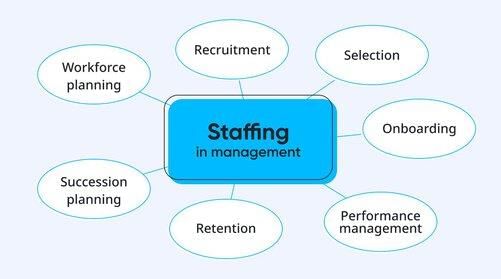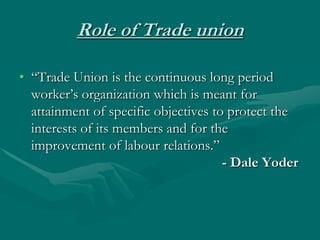|
The key components involved in the staffing process include workforce planning, recruitment, selection, training, development, promotion, compensation, and performance appraisal. 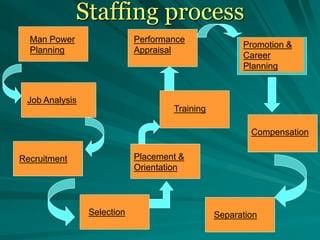 |
Card: 2 / 48 |
|
Staffing is primarily the responsibility of the Human Resource Management function. |
Card: 4 / 48 |
|
True or False: Staffing only occurs during the initial setup of an organization and is not a continuous process. |
Card: 5 / 48 |
|
Fill in the blank: Effective staffing is crucial for the ___ and ___ of the organization. |
Card: 7 / 48 |
|
Proper staffing prevents the inefficient utilization of staff and excessive labor expenses. |
Card: 10 / 48 |
|
Riddle: I am a process that helps fill positions, ensuring the right people are in the right roles. What am I? |
Card: 11 / 48 |
|
Optimal staffing enhances job satisfaction and boosts employee morale by aligning individuals with suitable job positions. |
Card: 14 / 48 |
|
What role does the size of the Human Resources department play in relation to the business? |
Card: 15 / 48 |
|
The size of the Human Resources department indicates the size of the business, with larger companies having specialists for each function within the department. |
Card: 16 / 48 |
|
HRM is responsible for recruitment, job analysis, employee training and development, maintaining labor relations, handling grievances, providing social security, and defending the company in legal matters. |
Card: 18 / 48 |
|
The emergence of trade unions created a need for a link between owners and workers, leading to the role of a ___ officer. |
Card: 19 / 48 |
|
True or False: The role of a labour welfare officer was highly regarded by both workers and owners. |
Card: 21 / 48 |
|
False. The role was limited to basic welfare activities and was not highly regarded. |
Card: 22 / 48 |
|
Fill in the blank: The human relations approach in HRM recognizes the importance of the ___ factor in an organization's success. |
Card: 23 / 48 |
 Unlock all Flashcards with EduRev Infinity Plan Starting from @ ₹99 only
|
|
What led to the replacement of personnel managers with human resource managers? |
Card: 25 / 48 |
|
The increased scope of work and the recognition of employees as valuable resources due to technological developments necessitated this change. |
Card: 26 / 48 |
|
Riddle: I am a function of management, I help find and evaluate people, and I am essential for organizations. What am I? |
Card: 27 / 48 |
|
What is the relationship between staffing and other management functions in HRM? |
Card: 29 / 48 |
|
Staffing is both a function of management, like planning and organizing, and a distinct functional area like marketing and financial management. 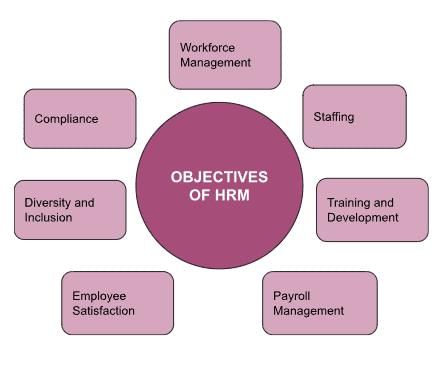 |
Card: 30 / 48 |
|
Fill in the blanks: The role of HRM evolved from ___ welfare and personnel management to a more comprehensive management of ___ as a valuable resource. |
Card: 31 / 48 |
|
The main steps involved in the staffing process include estimating manpower requirements, recruitment, selection, placement and orientation, training and development, performance appraisal, promotion and career planning, and compensation. 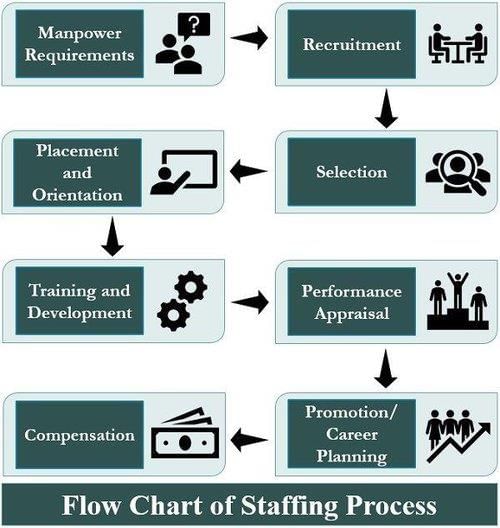 |
Card: 34 / 48 |
|
Fill in the blank: Recruitment is the process of searching for prospective employees and ___ them to apply for jobs in the organization. |
Card: 35 / 48 |
|
True or False: Performance appraisal is solely concerned with the training of employees. |
Card: 37 / 48 |
|
False. Performance appraisal is concerned with rating or evaluating the performance of employees. |
Card: 38 / 48 |
|
Riddle: I help people grow in their careers and ensure they are ready for higher roles, but I am not a manager. What am I? |
Card: 39 / 48 |
|
The purpose of orientation is to introduce new employees to the organization, familiarizing them with their units, supervisors, fellow employees, and important organizational procedures and policies. |
Card: 42 / 48 |
|
Fill in the blank: Compensation refers to all forms of pay or rewards given to employees, including direct financial payments and ___ payments. |
Card: 43 / 48 |
|
Factors that influence compensation plan design include legal considerations, union agreements, company policy, and equity considerations among employees. |
Card: 46 / 48 |
|
Internal sources (filling positions from within the organization) and external sources (hiring candidates from outside the organization). |
Card: 48 / 48 |





